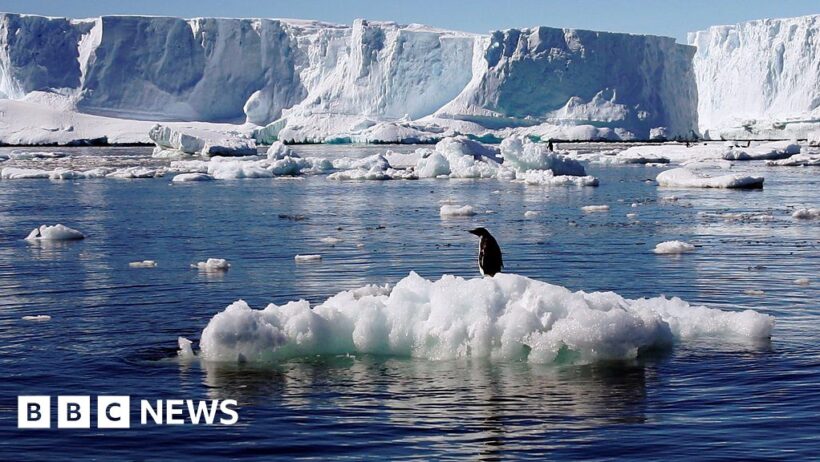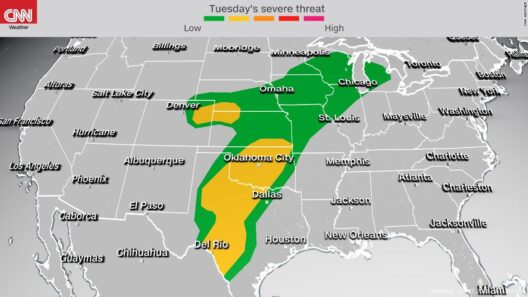The ongoing phenomenon of ice cap melting has drawn significant attention globally, stirring a blend of apprehension and discourse amongst scientists, policymakers, and citizens alike. To better understand whether global warming serves as the primary catalyst in this alarming scenario, it is crucial to delve into the multifaceted relationship between rising temperatures and the integrity of polar ice structures.
Ice caps, predominantly located in the Arctic and Antarctic regions, are vast expanses of ice formed by accumulated snowfall over millennia. They are critical components of the Earth’s climate system, playing a vital role in regulating temperatures and sea levels. As these ice caps melt, they contribute to various environmental challenges, including habitat destruction, sea-level rise, and extreme weather patterns.
One of the most pressing questions at hand is the extent to which global warming instigates ice cap melting. Global temperatures have risen significantly since the late 19th century, with the last few decades witnessing an accelerated warming trend. Coupled with increased greenhouse gas emissions, primarily carbon dioxide and methane, the delicate balance maintaining ice mass is destabilized. The Intergovernmental Panel on Climate Change (IPCC) has asserted that human activities are unequivocally responsible for the majority of observed climate changes since the mid-20th century.
When discussing the mechanisms through which global warming influences ice cap melting, one must consider thermal expansion and the albedo effect. Thermal expansion refers to the phenomenon where water expands as it warms, contributing to rising sea levels. Additionally, the albedo effect—a measure of how much sunlight is reflected by a surface—significantly contributes to warming in polar regions. As ice and snow melt, they expose darker ocean or land surfaces that absorb more solar radiation, exacerbating temperature increases and perpetuating a cycle of melting.
Empirical data illustrate the accelerating pace of ice loss. Satellite imagery and airborne laser studies have provided clear evidence of shrinking ice sheets, particularly in Greenland and West Antarctica. Studies indicate that Greenland’s ice sheet is losing mass at an alarming rate—approximately 267 billion tons of ice annually between 1992 and 2017. The Antarctic region is no less concerning, with West Antarctica’s Thwaites Glacier, often dubbed the ‘Doomsday Glacier,’ showing substantial retreat, which could potentially lead to irreversible consequences for global sea levels.
Beyond mere statistics, the implications of melting ice caps are far-reaching. Sea-level rise poses a significant threat to coastal communities and ecosystems, with estimates suggesting that millions of people could face displacement by mid-century if current trends continue. Flooding from sea-level rise can lead to salinization of freshwater sources and disrupt local agriculture, creating food security crises.
The biodiversity inherent in polar regions also stands at the brink. Species that rely on ice-covered habitats, such as polar bears, seals, and various seabirds, face existential threats. As their habitats diminish, the cascading effects on the food web could decimate populations, leading to potential extinction. Furthermore, melting ice caps contribute to the release of ancient carbon reservoirs trapped in permafrost, further exacerbating the greenhouse gas problem.
Conversely, some argue that natural climatic variations could also account for some of the observed changes in ice cap dimensions. Throughout geological history, the Earth has experienced periodic warming and cooling trends. While this is indeed true, the current pace of change is unprecedented and correlates directly with human influence. It is imperative to distinguish between natural variability and anthropogenic effects when analyzing ice melt dynamics.
With global awareness growing, the response to melting ice caps has included international agreements and policy initiatives. The Paris Agreement, forged in 2015, exemplifies a collective effort by countries to mitigate climate change through reduced greenhouse gas emissions. Many nations are investing in renewable energy sources, promoting energy efficiency, and implementing carbon capture technologies to combat the effects of rising global temperatures.
However, successful mitigation must encompass not only emissions reductions but also proactive adaptation strategies to cope with the inevitability of some level of ice melt. Coastal communities must develop resilience plans, incorporating elevated infrastructure and sustainable land-use practices to fortify against potential climate-related disasters.
Education and public engagement play pivotal roles in fostering collective action. Informing individuals about the science behind climate change and its consequences can strengthen community initiatives aimed at reducing carbon footprints and advocating for environmental policies. Grassroots movements, citizen science, and environmental stewardship can galvanize local populations to take decisive action.
In conclusion, the melting of ice caps is inextricably linked to global warming, predominantly driven by anthropogenic factors. The ramifications of this phenomenon are profound, affecting biodiversity, sea levels, and global climate systems. Mitigation and adaptation efforts are essential to address the myriad challenges posed by melting ice caps. Only through concerted action and a commitment to sustainable practices can society hope to mitigate the impacts of global warming and preserve vital ice habitats for future generations.








